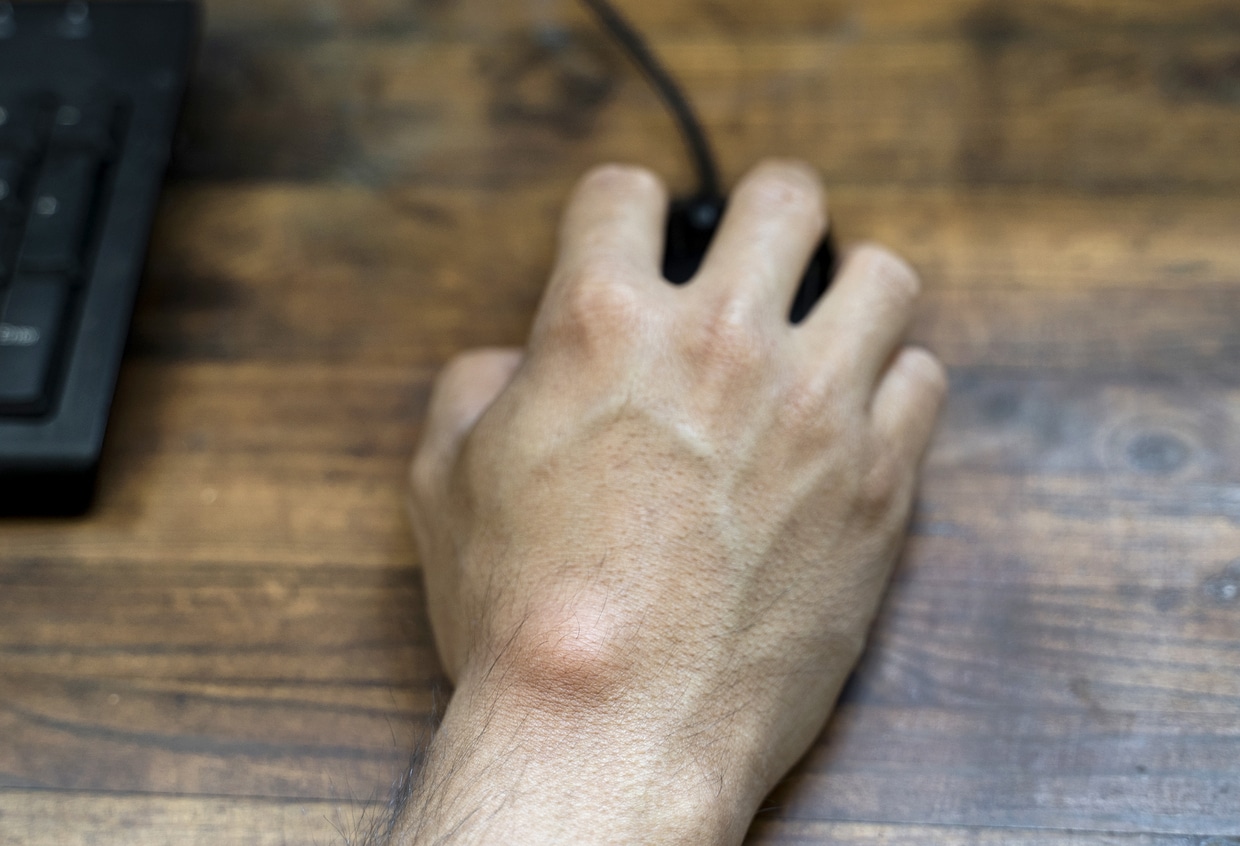Written By: Dr. Evan Steinke, DC
Wrist pain is a common occurrence whether from computer use or a sporting injury. In some cases this can be caused by a ganglion cyst which may or may not appear as a visible bump or mass over the affected joint. While it is possible to form a ganglion cyst over most joints, approximately 90% are found on the wrist and are three times more common in women than men. Due to the nature of being fluid filled the cyst is often soft rather than hard and firm. You may also have noticed this mass but have no wrist pain, that is okay, it is not uncommon for ganglion cysts to be asymptomatic as well.
In a typical healthy joint you would expect there to be a capsule surrounding the joint that is then filled with a lubricating liquid that helps the joint move smoothly. Currently, it is thought that ganglion cysts are caused by repetitive and chronic trauma to the capsule around a joint that leads to deterioration and tears. Eventually a tear produces a pouch that is filled with joint fluid resulting in a cyst. Depending on the size of the pouch this may or may not be visible over the wrist. For this reason athletes with high wrist use, such as gymnasts, are prone to this condition.
Examination by your chiropractor can help evaluate and rule out other possible causes of wrist pain. It may be necessary to get imaging, such as xray, to rule out other severe causes of wrist pain.
Treatment of ganglion cysts will vary depending on symptoms. Even in cases where it is asymptomatic you should still have an evaluation to rule out other possible causes. The ganglion cyst may regress by itself, however, in the cases of wrist pain a conservative care approach can be offered. This may include modifying activities, adjusting ergonomics, splinting and more. It is not recommended to try and pop or drain the cyst yourself.
In cases with pain, nerve symptoms or for cosmetic appearance you may be a candidate for an aspiration of the cyst. This is a minimally invasive technique where a needle is inserted and the excess fluid is drained. It should be noted that there is a chance of recurrence. In these cases surgery may be performed to remove the pouch which has a much lower chance of recurrence.
If you are experiencing any of the above symptoms be sure to book in at Active Sports Therapy, for a personal assessment and treatment plan. Dr. Evan Steinke, BSc. DC works at AST Westman
*This blog is not intended to officially establish a physician-patient relationship, to replace the services of a trained physician, naturopathic doctor, physical therapist or chiropractor or otherwise to be a substitute for professional medical advice, diagnosis, or treatment.



